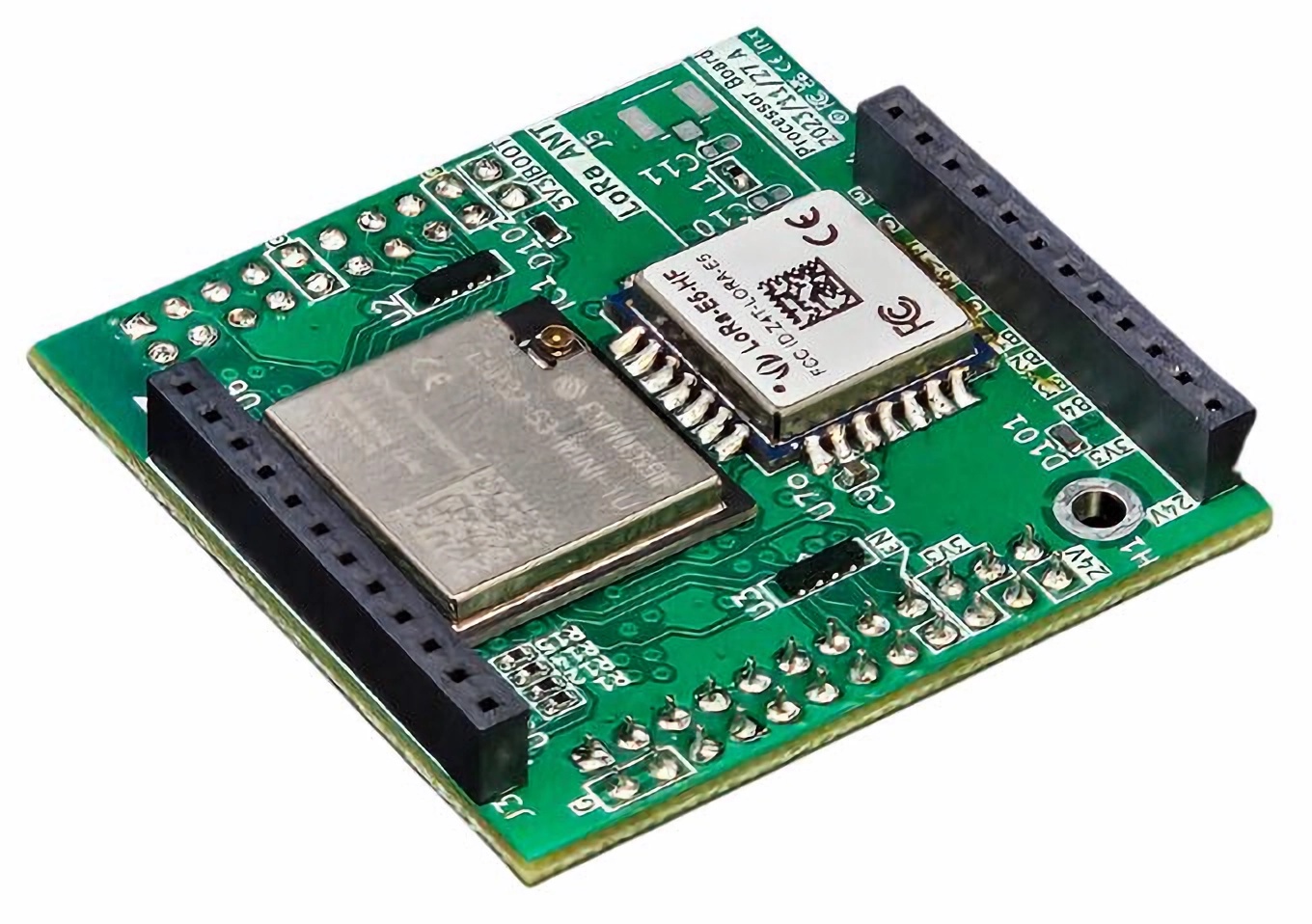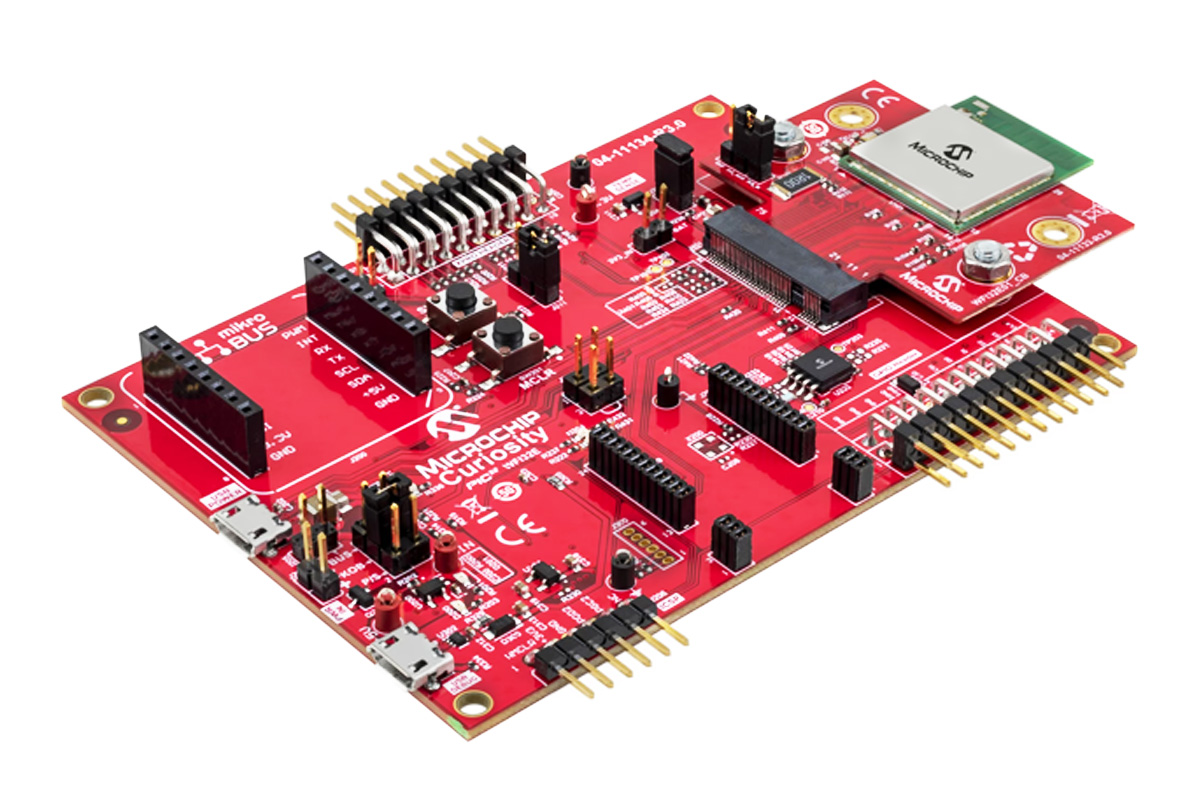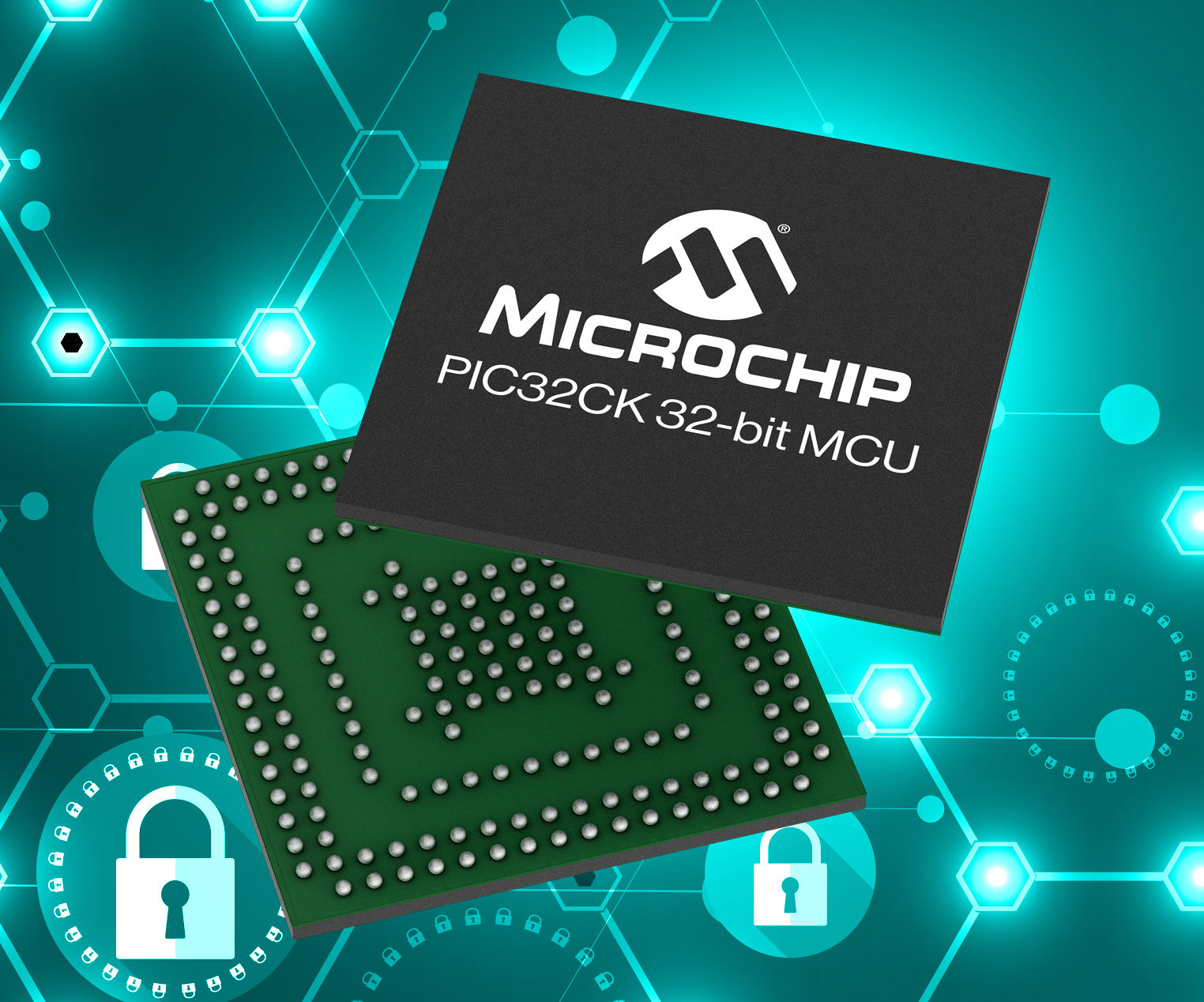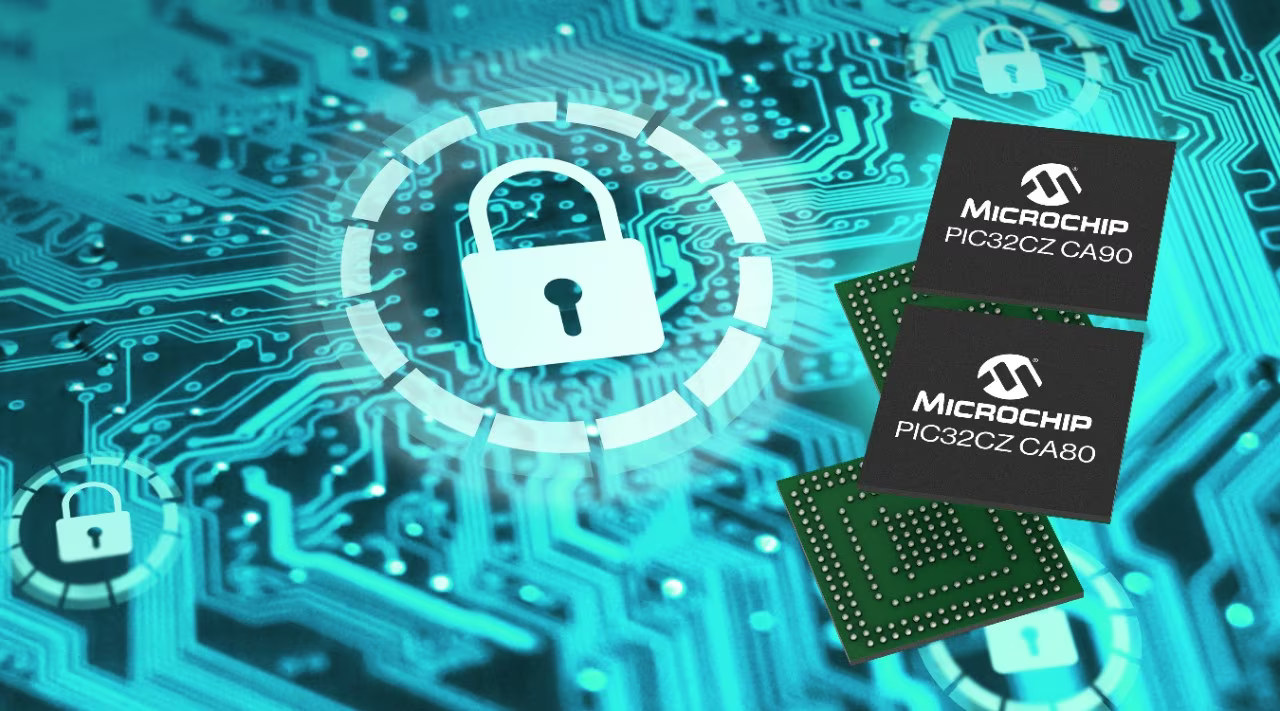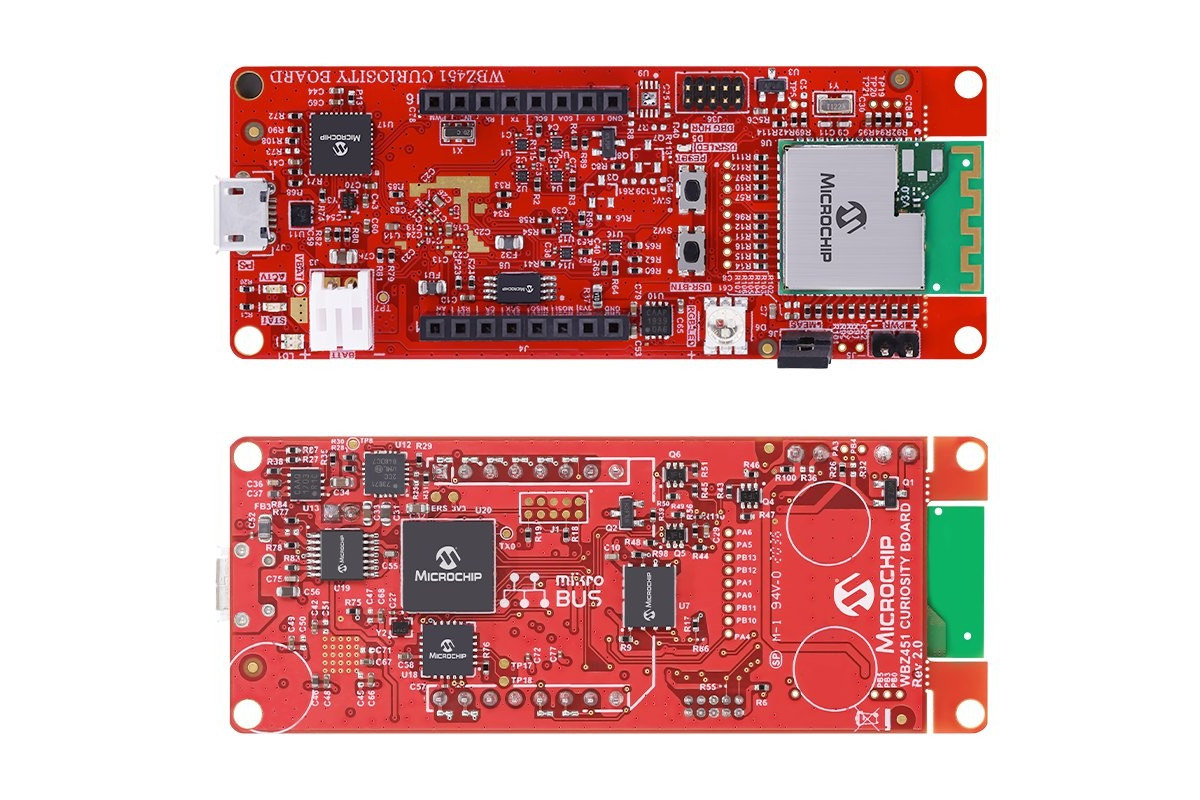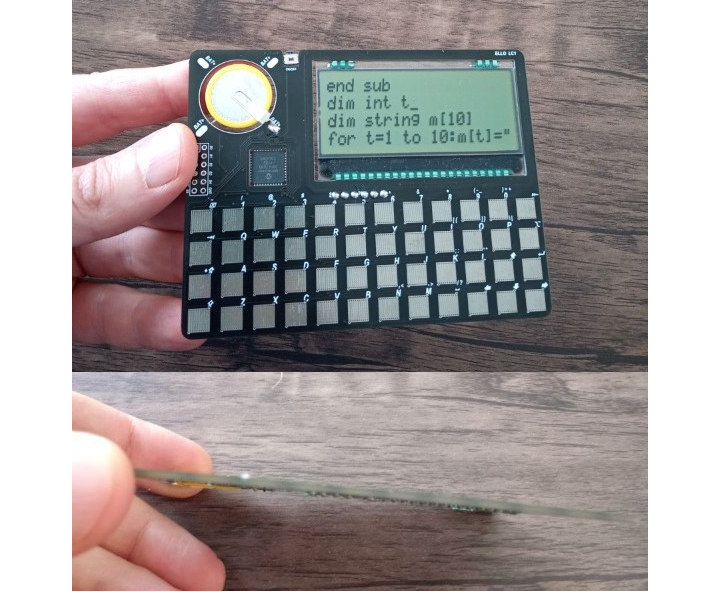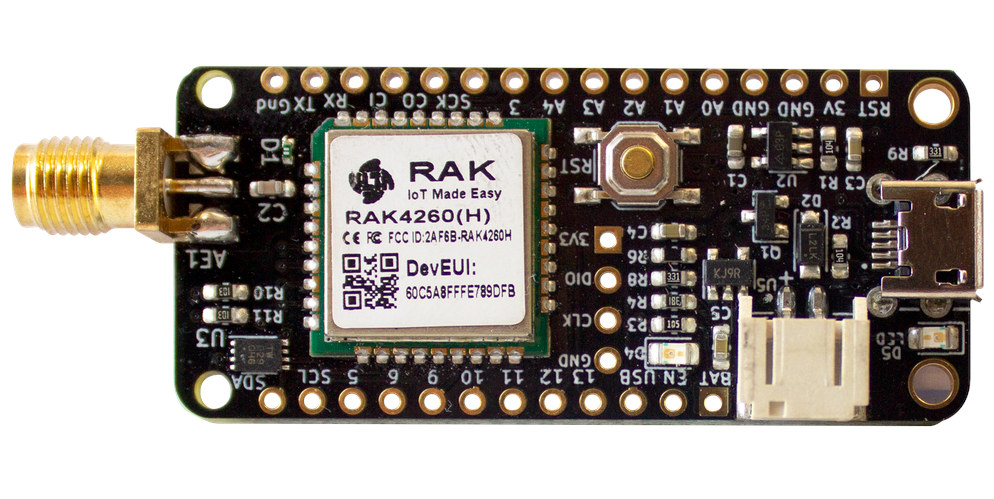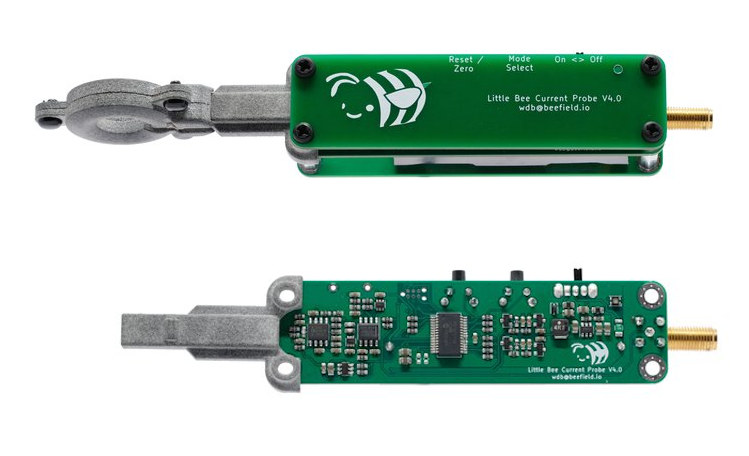Sheffield-based IoT company, inx-systems has developed a programmable LoRaWAN IoT module and a development breakout board that integrates with Arduino MKR, Adafruit FeatherWing, Grove, and mikroBUS shields. The module is powered by an ESP32-S3 microcontroller which comes preloaded with inx’s no-code LoRaWAN software development platform, Lucid. The WAN-4-ALL module has built-in Wi-Fi, Bluetooth, and LoRaWAN connectivity via the ESP32-S3 microcontroller and Seeed Studio Wio-E5 module. This makes the module suitable for short-range, medium-range, and long-range IoT applications such as remote monitoring, home automation, industrial control, and smart agriculture. We have covered other LoRaWAN development platforms such as SB Component’s RAKWireless-based products, Particle’s multi-radio devices, and the UnPhone. The WAN-4-ALL module differentiates itself with the preloaded no-code LoRaWAN development environment and multiple connectivity options. WAN-4-ALL module specifications: SoC – Espressif Systems ESP32-S3 dual-core microcontroller @ 240MHz with Wi-Fi 4, Bluetooth LE 5 LoRaWAN Module – Seeed Studio Wio-E5 Module based on […]
Microchip PIC32MZ-W1 is a 32-bit MIPS WiFi MCU with 60+ GPIO, USB, CAN Bus, Ethernet, and more
Microchip recently released the PIC32MZ-W1 wireless MCU along with 20 other WiFi parts, including WiFi MCUs, link controllers, network controllers, and plug-and-play modules. Among them, the PIC32MZ-W1 wireless MCU is the most interesting because of its 32-bit MIPS microAptiv M-class core running at up to 200MHz, advanced hardware security features, and integrated Microchip Trust Platform for secure cloud authentication. Over the years ESP32 MCUs have become the go-to choice for wireless applications. Still, one problem we always have with ESP32 SoCs is their limited GPIO option due to their strapped-out pin structures. But this new MCU has over 60 GPIO pins to work with along with Ethernet MAC, USB, CAN Bus, CANFD, SPI, I2C, SQI, UART, ADC, JTAG, and more. PIC32MZ-W1 wireless MCU specifications MCU MIPS32 M-Class core clocked at 200 MHz 16KB I-Cache, 16KB D-Cache microMIPS mode (up to 35% smaller code size) DSP extensions (4x 64-bit accumulators, single-cycle […]
Microchip PIC32CK 32-bit Arm Cortex-M33 MCU combines Hardware Security Module with Arm TrustZone for IoT cybersecurity compliance
Microchip PIC32CK is a new family of 32-bit Arm Cortex-M33 microcontrollers clocked up to 120 MHz with Arm Trustzone and an optional integrated Hardware Security Module (HSM) that can help companies meet the cybersecurity requirements for consumer IoT devices and critical infrastructure mandated in the US, Europe, and other countries. Two sub-families are available with the PIC32CK GC and PICK32CK SG with the latter integrating the HSM, and the company claims it is the first 32-bit device on the market that combines an HSM with TrustZone technology for optional security. The PIC32CK is also said to support ISO 26262 functional safety and ISO/SAE 21434 cybersecurity standards. Microchip PIC32CK specifications: MCU core – Arm Cortex-M33 clocked at up to 120 MHz with 4KB combined instruction and data cache, TrustZone security Memory and Storage 128KB, 256KB, or 512KB SRAM 512KB, 1MB, or 2MB flash 128KB boot flash memory 64KB of configuration flash […]
Microchip PIC32CZ CA 300 MHz Arm Cortex-M7 MCU features a Hardware Security Module (HSM)
Microchip PIC32CZ CA is a new family of Arm Cortex-M7 microcontrollers with the PIC32CZ CA90 integrating a Hardware Security Module (HSM), and the PIC32CZ CA80 doing without one. The HSM in the PIC32CZ CA90 provides advanced security for industrial and consumer applications and operates as a secure subsystem with a separate MCU on board that runs the firmware and security features including hardware secure boot, key storage, cryptographic acceleration, true random number generator, and more. Microchip PIC32CZ CA key features and specifications: MCU core – Arm Cortex-M7 clocked at up to 300 MHz with 16KB ECC-protected instruction and data L1 cache, up to 256Kb of Tightly Coupled Memory (TCM): 128 KB each of ECC-protected Instruction and Data TCM Memory 512KB or 1MB SRAM with ECC, 8KB SRAM for backup mode 2MB, 4MB, or 8MB flash 2x 80KB boot flash memory 16-bit external bus interface (EBI) – Static memory controller for […]
WBZ451 Curiosity Board features Microchip PIC32CX-BZ2 BLE and Zigbee 3.0 microcontroller
Microchip WBZ451 Curiosity Board features the company’s Microchip’s WBZ451PE Bluetooth Low Energy 5.2 and Zigbee 3.0 RF module based on the new Microchip PIC32CX-BZ2 32-bit Arm Cortex-M4F wireless microcontroller. WBZ451 Curiosity Board (EV96B94A) specifications: Wireless module – WBZ451PE Bluetooth Low Energy and Zigbee RF Module with Microchip PIC32CX-BZ2 32-bit Arm Cortex-M4F wireless microcontroller @ up to 64 MHz, 128KB RAM, 1MB flash, 2.4 GHz radio for Bluetooth LE 5.2 and 802.15.4 (Zigbee 3.0) Tx output power – Up +12 dBm Rx sensitivity – Up to -103 dBm PCB antenna 29x I/O pins Storage – 64Mbit QSPI flash Expansion – mikroBUS socket for MikroElectronika Click adapter boards Sensor – Microchip MCP9700A analog voltage temperature sensor Debugging On-board Programmer/Debug Circuit using PICkit On-board 4 (PKoB4) based on Microchip SAME70 MCU On-board USB to UART Serial Converter with Hardware Flow Control based on Microchip MCP2200 10-pin Arm Serial Wire Debug (SWD) header for […]
ELLO LC1 – A 2mm thin DIY “computer” based on Microchip PIC18 8-bit MCU
We often write about business card or credit card-sized boards, but it’s only true for 2D dimensions, as most boards are over a centimeter thick, with possibly the thinnest we’ve covered being the Khadas Edge2 SBC that’s just 7mm thick. So Kn/vD took it upon himself to build a DIY computer that was really about the size of a credit card, and came up with the ELLO LC1 based on a Microchip PIC18 8-bit microcontroller, featuring an integrated display and keyboard, and powered by a coin-cell battery. It’s just 2mm thin. ELLO LC1 specifications: MCU – Microchip PIC18 (PIC18F47Q83-I/PT) 8-bit microcontroller with 13KB RAM and 128KB flash, out of which 64KB are reserved as user file storage Display – 20×4 character text panel (Display Visions EADOGM204N) Keyboard – 48x touch panels on the PCB Expansion – 12-pin unpopulated header for debugging (ICSP) and GPIO expansion Misc – Power button Power […]
BastWAN Feather-compatible LoRaWAN board features RAK4260 Microchip R34 module
We’ve previously written about a Feather-compatible LoRaWAN board equipped with RAK4260 module based on Microchip R34 LoRa SIP called Penguino Feather. It appears somebody, namely Electronic Cats based in Mexico, decided to design an almost identical board with BastWAN. Let’s see if there are any differences besides the cheaper price. BastWAN specifications: LoRa module – Rak wireless RAK4260 module with: SiP – Microchip SAML21 Arm Cortex M0+ MCU @ 48 MHz, 32 KB RAM, 256 KB Flash, Semtech SX1276 LoRa Connectivity Frequency Range – 862 to 1020 MHz High level of accuracy and stability (32MHz TXCO) Max Tx Power: 20dBm; Max Sensitivity: -148dBm; Rx Current: 17mA (typical) Compliant with LoRaWan 1.0.2 Antenna – SMA and u.FL (IPEX) antenna connector I/Os – Feather headers with 20x IO pins including PWN, serial, I2C, SPI, 6x 12-bit ADC, 1x 10-bit DAC HW security – ATECC608A crypto authentication chip Programming and debugging 10-pin 4-pin […]
Little Bee is an affordable, open hardware current & magnetic field probe (Crowdfunding)
Little Bee is an affordable, open-source hardware, and high-performance current probe and magnetic field probe designed to debug and analyze electronic devices at a much lower cost than existing solutions such as Migsic CP2100B or I-prober 520. This type of tool is especially important for power electronics, which has become ever more important with electric vehicles, alternative energy solutions, and high-efficiency power supplies. Little Bee B1 hardware specifications and key features: Based on Anisotropic Magneto-Resistive (AMR) magnetic sensor. Adjustable bandwidth (10 MHz and 1 MHz) Adjustable gain (1x and 4x) Automatic zeroing SMA Output Connector for connection to any standard 1 MΩ impedance oscilloscope input Current sensing Bandwidth – DC – 10 MHz Sensitivity – 0.25 Volts/Amp Max Current – +/- 5 A Noise – 3 mA RMS at 10 MHz bandwidth, 2 mA RMS at 1 MHz bandwidth DC Accuracy – +/- 15% Insertion Impedance – 100 nH in […]


